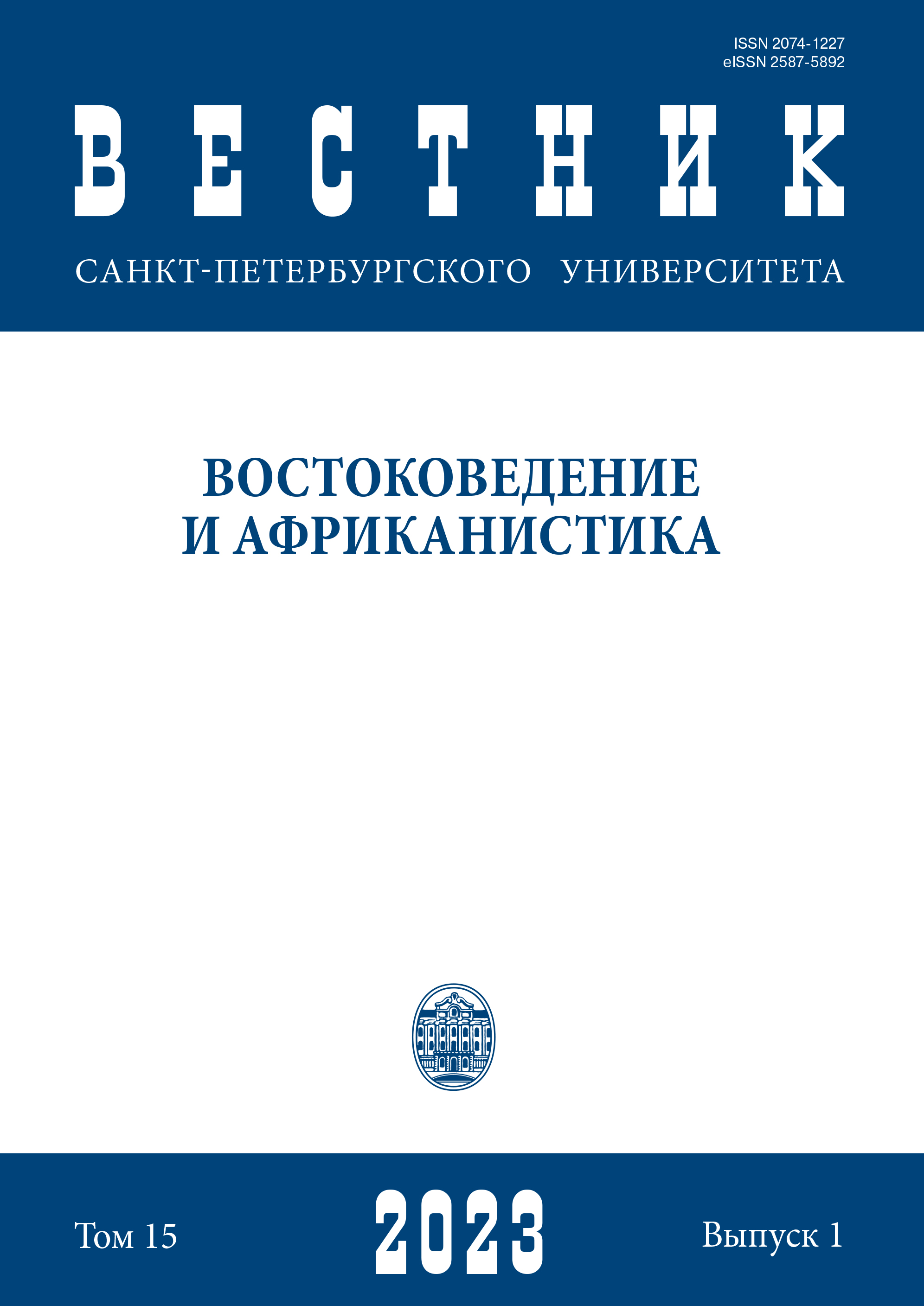Woman and Yemen in Three Novels by Nadia al-Kawkabani (Yemen)
DOI:
https://doi.org/10.21638/spbu13.2023.106Abstract
Among scholars of literature, there is a discussion about whether modern Arab women write fiction differently from their male counterparts. Some argue that women writers have special concerns which result from their specific experiences in Muslim society and determine not only the thematic spectrum of their works, but also a specific, sometimes vague manner of their literary expression. This discussion is based mostly on the works of prominent women writers from Egypt, Lebanon, Palestine, Syria, North Africa, sometimes Saudi Arabia and the Arab Gulf States. Yemen has not received much attention in this discussion, as well as in literary studies in general. This article examines to what extent the suggested female, or “feminist”, manner of writing is manifested in the works of Yemeni novelist and short story writer Nadia al-Kawkabani, who is one of the most prolific women writers in her country. In her three novels, Not More Than Love (2006), Submissive Wives (2009), and My Sanaa (2013), “feminist” topics are touched upon repeatedly, but practically none of them is represented by a detailed story with a sufficient degree of sentiment and psychologism. On the contrary, a great deal of attention in these novels is given to the culture and modern history of Yemen, and the narrative, like in many male writers’ works, is dominated by sociopolitical issues. One may argue that Yemen in Nadia al-Kawkabani’s novels prevails over the “feminist” issue.
Keywords:
Arab novel, Yemen, Nadia al-Kawkabani, feminism
Downloads
References
Downloads
Published
How to Cite
Issue
Section
License
Articles of "Vestnik of Saint Petersburg University. Asian and African Studies" are open access distributed under the terms of the License Agreement with Saint Petersburg State University, which permits to the authors unrestricted distribution and self-archiving free of charge.





